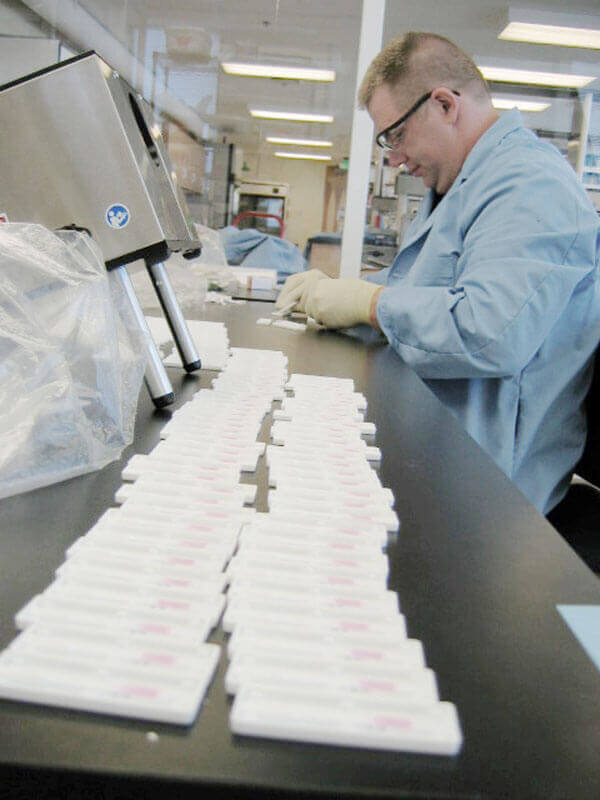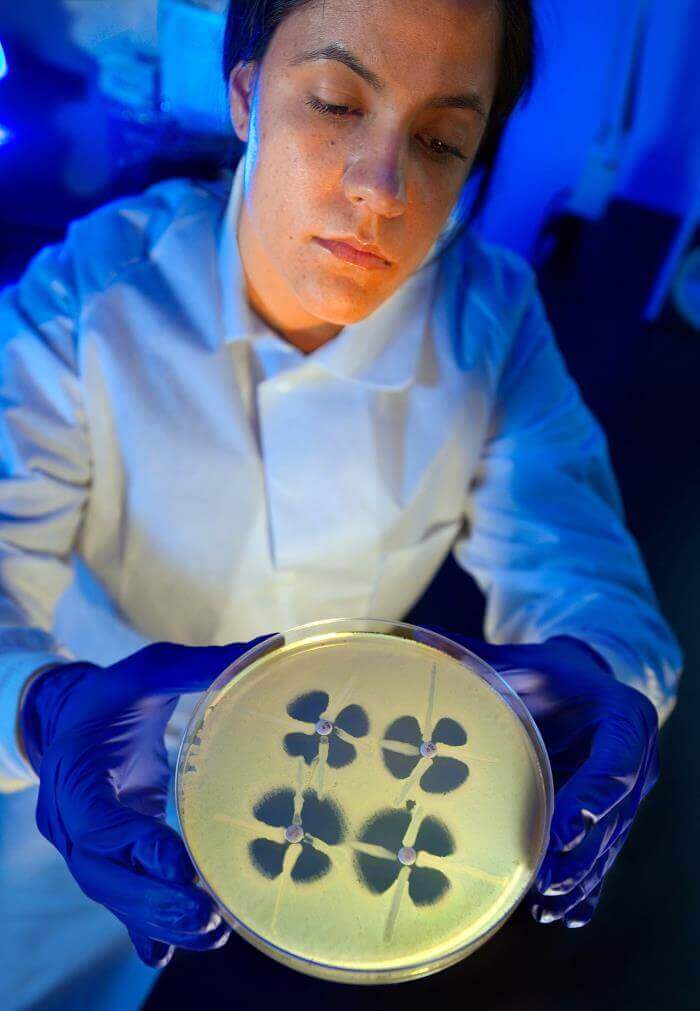
- PATH/Dan Chang
New rapid diagnostics are urgently needed to prevent unnecessary use of antibiotics and curb the growing problem of antimicrobial resistance, according
to a new report from
the United Kingdom’s Review on Antimicrobial Resistance (AMR).
The report calls for greater investment to develop and support adoption of quicker and more precise diagnostics tests.
Antibiotic overuse and growing resistance
The rise of drug-resistant bacteria poses a significant health threat to people around the world. Unnecessary use of antibiotics is helping drive this
rise in resistance, but since the 1940s, there has been little improvement in the way bacterial infections are diagnosed.
The report points out that most antibiotic prescriptions are issued by medical professionals who are making a diagnosis empirically without using a diagnostic
test. The fact that diagnostic tests are relatively expensive but antibiotics are cheap means it is less expensive for doctors and their patients to
skip the test and issue the antibiotic prescription in case it proves helpful.
Diagnostic tests are also time-consuming. It can take 36 or more hours to identify whether a person has an infection, so doctors often put sick patients
on a treatment before a diagnosis can be confirmed. The scale of this problem can be quite dramatic: The report highlights one study on patients with
respiratory problems which found that more than two-thirds of courses of antibiotics were likely to have been inappropriately prescribed for conditions
other than infections or for infections caused by viruses, which aren’t responsive to antibiotics.
Rapid diagnostic tests—which will allow doctors to identify within minutes whether an infection is present—can prevent unnecessary prescription,
and more refined tests—which enable doctors to identify the exact strain of the bacterial infection and the antibiotics to which it is resistant
or susceptible—will enable doctors to more precisely prescribe narrow-spectrum antibiotics, which will help slow the development of resistance.
Incentivizing development of diagnostics

- A CDC scientists examines antibiotic resistant bacteria. CDC/ Melissa Dankel
While new rapid diagnostics are urgently needed, the report points out that there is little commercial incentive for drug developers to invest in diagnostics,
since their use would lead to decreases in the number of antibiotics purchased.
The report proposes the use of “Diagnostics Market Stimulus pots” that would provide a revenue stream for developers of products that meet a recognized
area of need. These developers would receive “top-off” payments when products are purchased by healthcare providers, thus raising the commercial benefit
of investing in diagnostic development to match the societal need for these products.
The report also calls for greater investment in early stage research, referring to its previous report which called for an AMR innovation fund of US$2
billion over five years to boost funding for such research.
“For far too long we haven't recognized the huge cost to society of increasing resistance when we use antibiotics that we don’t need—such as antibiotics
for flu which have no effect except to increase the chances of superbugs developing," said Lord Jim O'Neill, chairman of the AMR review. "To avoid
the tragedy of 10 million people dying every year by 2050, the world needs rapid diagnostics to improve our use of antibiotics. They are essential
to get patients the right treatment, cut down on the huge amount of unnecessary use, and make our drugs last for longer."
A diagnostic “wish list”
To inform investment efforts in diagnostic research and development, the report includes a “wish list” of diagnostics that could be game changers in curbing
antibiotic resistance.
Below are of few of those identified in the report:
- Rapid diagnostics that could be used at home to indicate bacterial or viral infections. These would potentially reduce visits to the doctor and so
reduce healthcare resource consumption.
- Biomarker panels to distinguish whether patients admitted via A&E [accident and emergency] for pneumonia or fever have bacterial infections or
not.
- A bedside test that would reliably exclude any infection. This should reduce the empirical use of antimicrobials and could also often be used as part
of the treatment protocol for sepsis.


